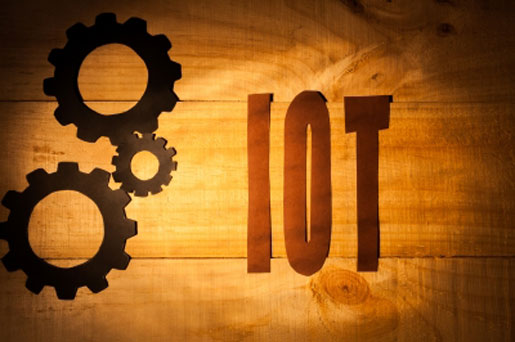Advancements in IoT technologies for tracking, communicating, and managing the supply chain are helping to achieve better in-transit medication management.
May 22, 2017

Advancements in IoT technologies for tracking, communicating, and managing the supply chain are helping to achieve better in-transit medication management.
Ash Patel
Transporting medicine from pharmaceutical factories to pharmacies is a $78.8 billion industry globally, according to Pharmaceutical Commerce's annual Biopharma Cold Chain Sourcebook. Traditionally, only the cold chain portion of the total biopharma supply chain--an estimated $12.6 billion market--was monitored for temperature and humidity.
In recent years, the industry has seen the introduction of biologic-based drugs, the expansion of the international drug trade, increased drug security concerns, and new regulations requiring stricter oversight of drugs during transportation. As a result, both the cold chain and the much larger non-cold chain portion (a $66.2 billion market) of the biopharma supply chain will have to be monitored for increasing parameters in the coming years.

Figure 1: Global biopharma logistics spending ($billions) (Source: Pharmaceutical Commerce's annual Biopharma Cold Chain Sourcebook)
This new supply chain reality creates new challenges in monitoring and maintaining the required transit environment to deliver the correct supplies safely and securely, as well as new opportunities to provide highly integrated, more carefully controlled drug supply chains.
Cue the Internet of Things (IoT).
Advancements in IoT technologies for tracking, communicating, and managing the biopharma supply chain are helping to achieve better in-transit medication management (ITMM) through end-to-end solutions. This is beneficial to the pharmaceutical industry and the consumer. Another advantage of having live visibility of the supply chain is that inventory can be pulled based on demand at the outlets rather than being pushed by the factory, improving supply chain efficiency.

Figure 2: End-to-End In-Transit Medication Management Solution (Source: Renesas Electronics America Inc.)
Sensing
Sensors allow for tracking temperature, humidity, pressure, location, tampering, and identification of drugs at any point in the supply chain. Based on the parameter(s) that are being tracked in the supply chain, they offer a very distinctive value proposition. For example, humidity/pressure/temperature (drug quality), GPS coordinators/accelerometer (drug location), and theft/tampering/identification (Drug Security).
|
Ash Patel |
Advancements in sensing technology have improved measurement accuracy, decreased power consumption, reduced form factors with higher integration, and lowered cost. As a result, many more parameters can be tracked reliably in the supply chain at a reasonable price with devices that have longer battery lives or are powered by energy harvesting.
Wireless Connectivity
Wireless connectivity has come a long way as far as cost, power, integration, and ease of adoption goes.
Data from traditional ITMM solutions had to be read by wired interfaces, which means you could not get real-time tracking data. In other words, corrective action was implemented after the fact and not as soon as there was a glitch in the supply chain.
Now, ITMM solutions can be connected to the cloud using near field communication (NFC), Bluetooth, Wi-Fi, LoRa, and/or cellular protocols, depending on the use case. The trade-offs for deciding on a protocol(s) include: real-time data, cost, power, data usage charges, range, and data security.
Mobile Devices
Without ubiquitous mobile devices, the IoT would not be at the scale it is at today. Mobile devices not only provide an easy gateway to the cloud, but can also serve as displays, local analysis hubs, and personal alert systems, eliminating the need for an expensive processor, and thus making the ITMM solutions more affordable. Additionally, intuitive mobile apps empower logistics providers to manage their supply chains efficiently by having access to meaningful data.
Traditional supply chain solutions needed a scanner and data logger, which connected to a terminal, which in turn would connect to a central station. The latest systems consist of a wireless data logger and cell phone connected to a cloud application. Logistics providers can afford to provide many of their employees with a mobile device, which in turn improves the responsiveness and efficiency of the supply chain.
Cloud Infrastructure
Cloud platforms have revolutionized the way we share and report data across the globe. Cloud-based platforms allow logistics providers to log and manage events within the supply chain. They can also automate the report generation and reporting to regulatory bodies. Utilizing cloud-based applications that are designed for ITMM enables a company to have a centralized and globally uniform process, which further improves efficiency.
By utilizing cloud platforms, companies can reduce the maintenance cost of internal servers and gain access to industry-leading data security. Cloud applications provide flexibility between different solutions available in the marketplace and enable companies to keep their systems up to date with the latest industry standards.
Conclusion
Technological advances from the IoT are enabling a new class of ITMM solutions that are easy to adopt and which address many problems associated with transporting pharmaceuticals. This is truly a case where technology is helping to solve a real problem, and the statistics will speak for themselves as we make further progress.
Ash Patel is the Healthcare Segment Manager at Renesas Electronics America Inc.
[Image courtesy of ANDONGOB/FREEDIGITALPHOTOS.NET; Headshot courtesy of RENESAS]
You May Also Like



